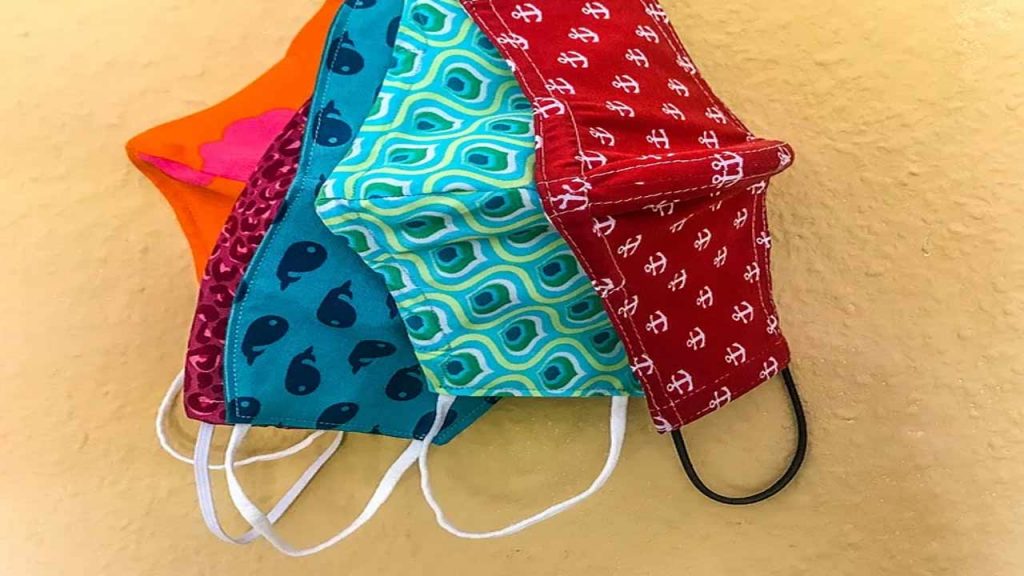The Covid-19 virus is primarily transmitted between people via respiratory droplets and contact routes. Wearing a face mask help in reducing the spread of Covid-19 and prevents it from spreading, as it acts as a barrier to catch the respiratory droplets that are released when people cough, sneeze, or talk.
Some types of masks are not intended for reuse, but there are a few things you can do to sanitize them, upgrade filtration, and extend their lives.
Here are some strategies to safely disinfect common types of masks for reuse-
- Cloth Mask
To clean your mask, run it through the washing machine and dryer after use. The water doesn’t necessarily need to be hot but makes sure to use a laundry detergent. If you don’t have access to a washing machine, you can wash it in a bowl using soap.
According to the ministry of health, ‘Regular household soap or detergent with hot water should be used for washing the mask first and then, dried properly before they are used. Masks should be discarded and changed if they become physically damaged or soaked.’
According to the Center for Disease Control and Prevention, the cloth masks should be washed at least once a day. One can disinfect the mask by separately washing it in a washing machine or with hot water and soap. Let the mask get completely dry before you use it again.
#DYK? Cloth masks should be washed after each use. Masks, when combined with other every day steps like washing your hands often and staying 6 ft apart, help slow the spread of #COVID19. Learn how to wash your mask properly: https://t.co/duj5ntAcDV. #WearAMask pic.twitter.com/iMwR46Bh2B
— CDC (@CDCgov) September 30, 2020
Another option is to put the mask into a paper bag and leave it in a warm place for at least two days. After that, the virus will become inactive and won’t be infectious.
- N95 Mask
You obviously shouldn’t wash a mask like an N95 because that can compromise the integrity of the filters.
Dr. KK Aggarwal, president of the Confederation of Medical Organisations of Asia and Oceania brought to you an easy technique, which could allow the masks to get disinfected and make it safer for reuse, something simple as ‘heating’ the mask could relatively disinfect the virus, and help recycle them for further use. Check out the video below to simply disinfect your N95 mask at home.
https://www.facebook.com/watch/?v=1013621575718374
Mask-wearing is essential to protect yourself and others from Covid-19 but it’s also important to sterilize and disinfect your masks before and after use. It’s also important to keep them safely, at home so that you prevent the risk of unnecessary exposure.
Sterilize N95 for safe re-use
1️⃣Tests by 4C air – Silicon Valley nanotech https://t.co/rmKIQnOMD6
Sterilization tested for E.Coli, but proposed methods shown to kill COVID19 + assess filtration efficiency
Hot air oven x 30 min: sterilized + filtration 96.6% #COVID19surgery
/4 pic.twitter.com/2HtOPkAHb5— Julie Hallet (@HalletJulie) March 25, 2020
- Disposable Masks
Blue or green, disposable masks that create a physical barrier and provide protection against droplets contaminants in the immediate environment should be disposed of properly immediately upon removal.
According to WHO, “Disposable Masks used by patients/caregivers/close contacts during home care should be disinfected using ordinary bleach solution (5%) or sodium hypochlorite solution (1%) and then disposed of using separate bins and bags for the safe collection of Covid waste.”
How to wear a mask safely?
- Always wash your hands with a disinfecting solution before and after use. Use sanitizer when the former is not available.
- Use the strings of the mask to tie or untie the mask.
- Ensure there are no gaps on either side of the mask. The mask should cover your nose, mouth, and let you breathe properly.
Coronavirus face covering “do’s” as you get ready to go to the grocery store, the pharmacy, or to your doctor’s office: Do make sure you can breathe through it. Do wear it whenever going out in public. Do make sure it covers your nose and mouth and do wash after each use. pic.twitter.com/F0bVHK5MpT
— CDC (@CDCgov) April 7, 2020
- While removing the mask great care must be taken not to touch the
the potentially contaminated outer surface of the mask - To remove the mask first untie the string below and then the string above and
handle the mask using the upper strings.

